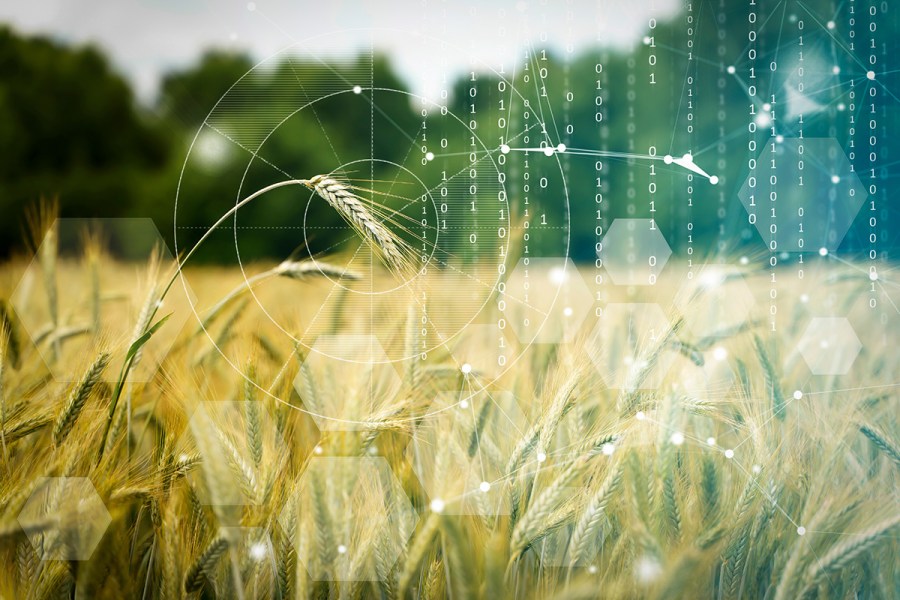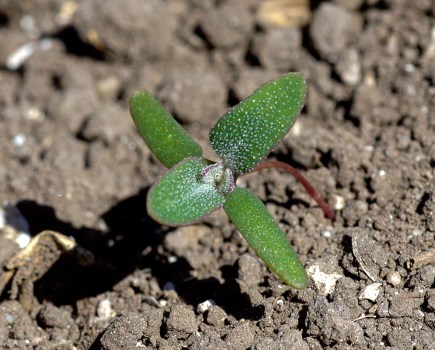In a bid to overcome the ‘snake oil’ descriptors of the past, one biostimulant manufacturer has turned to genomics to elevate the credibility of its innovations. CPM breaks down the science to understand what it means in the field.
“Nutrigenomics provides the scientific foundation to understand and refine how biostimulants work at a genetic level.” – JOHN HAYWOOD
By Janine Adamson
When launching a new product segment to a market of inherently sceptical individuals, it could be said there’s only really one opportunity to get the messaging right and successfully land on target, otherwise, there’s a lot of back-peddling to do.
Furthermore, when the science behind such innovations is still in the process of being understood, it’s even more critical that information provided is fact-based and robust, believes Unium Bioscience’s John Haywood.
“Historically, the biostimulant sector has faced much scepticism often due to overblown claims. While these ‘snake oil’ reputations aren’t entirely unfounded – some products indeed lack rigorous scientific validation – at Unium, we’re committed to quashing misconceptions,” he says.
Acknowledging the rather shaky start for biostimulants is what led Unium to assess where growers are in terms of product use and what approach could be deployed to instigate a U-turn.
“Abiotic crop stress caused by factors such as temperature extremes, drought, salinity, and waterlogging, is cited as responsible for 60-70% of global yield losses. This significantly overshadows the 15-20% loss attributed to biotic stressors like diseases, weeds and insect pests.
“Despite these stats, just 40% of growers currently consider using biostimulants or biological solutions to address these challenges. While we know this figure is slowly increasing, given the relentless pressure on the synthetic chemical toolbox, we wanted to find a way to scientifically prove the true potential of biostimulants and drive uptake,” explains John.
INTRODUCING GENOMICS
Consequently, Unium – through its partnership with Helm AG – invests more than £1M each year in global trials, claims John, the most recent being a programme focussed on genomics. “This cutting- edge research investigates how products influence gene expression in plants, specifically which genetic pathways are upregulated or downregulated when biostimulants are applied,” he says.
Up until now, farmers and agronomists have used phenotypic observations such as changes in leaf biomass or green leaf area to assess the effectiveness of biostimulants, suggests John. “While these visible changes are important, they don’t explain the underlying mechanisms. “Through genomics, we now have the tools to connect these phenotype responses to their genotypic causes, offering a more precise understanding of how and why these changes occur.”
Taking a more simplistic view, genomics is a field of molecular biology which studies an organism’s complete set of DNA, or its ‘genome’. In terms of a plant, at the heart of each of its cells lies a nucleus which houses this DNA. Then, within the DNA are genes which code for specific proteins responsible for root, stem, leaf, flower and fruit formation. Since cells are continually renewing, proteins must be consistently produced to support this cycle, explains John. “Furthermore, the term ‘gene expression’ is the process by which cells create the specific proteins they require.”
He breaks this science down into three aspects:
1. DNA: Each cell contains the full genetic code but only a fraction of genes are ‘switched on’ depending on the cell’s requirements and external factors such as nutrients or stimuli.
2. Transcription: Activated genes produce messenger RNA (mRNA) – a copy of the DNA code. This process
can be upregulated (enhanced) or downregulated (suppressed) depending on nutrient availability and other factors.
3. Translation: The mRNA is used to create proteins which perform specific biological functions such as growth, reproduction, and photosynthesis. Regulating gene expression allows plants to adapt and thrive in varying conditions, hence becoming a key focus of agricultural innovation.
Taking this to the next stage is nutrigenomics, which when applied to plants, studies how nutrition and bioactive compounds influence gene expression. As such, researchers can observe exactly which genes are upregulated or downregulated under different conditions.
“Pioneering research in nutrigenomics has shown how targeted nutrition and biostimulant use can enhance plant performance. For example, specialised formulations have been developed to improve crop growth and resilience,” says John.
“This suggests that just as athletes use supplements like vitamins and minerals to enhance performance, plants can benefit from biostimulants, because biostimulants go beyond basic nutrition by influencing gene expression and by doing so can enhance stress tolerance, improve water use efficiency, and boost yields.”
GENETIC UNDERSTANDING
“Nutrigenomics provides the scientific foundation to understand and refine how these compounds work at a genetic level,” stresses John.
He adds that utilising this insight means agriculture can move towards a more precise and sustainable approach to crop management, empowering farmers to enhance productivity while maintaining environmental balance and naturally unlocking the full potential of plants.
“The ability to identify and articulate the mode of action for biostimulants represents a groundbreaking and much desired development for the industry. This advancement not only improves product efficacy, but also enhances communication with regulatory bodies, offering clear, scientifically substantiated explanations of a product’s impact on plants.
“Furthermore, by understanding how biostimulants influence genetic pathways, growers can predict outcomes with greater certainty – knowing what will happen, why, and when,” he explains.
And according to John, looking at global crop yields, growers still have a long way to go to lift averages towards the world record figures, which he believes is where biostimulants can come in.
“We won’t be able to lift yields to world record levels everywhere as sometimes the stars have to align with environmental factors. However we can move a considerable way by integrating alternative approaches and technologies with new crop genetics to maximise yields in a sustainable way, without finding more land.”
The preliminary results of Unium’s genomics trial work will be shared at a webinar on Thursday.
This article was taken from the latest issue of CPM.
For more articles like this, subscribe here.
Sign up for Crop Production Magazine’s FREE e-newsletter here.




